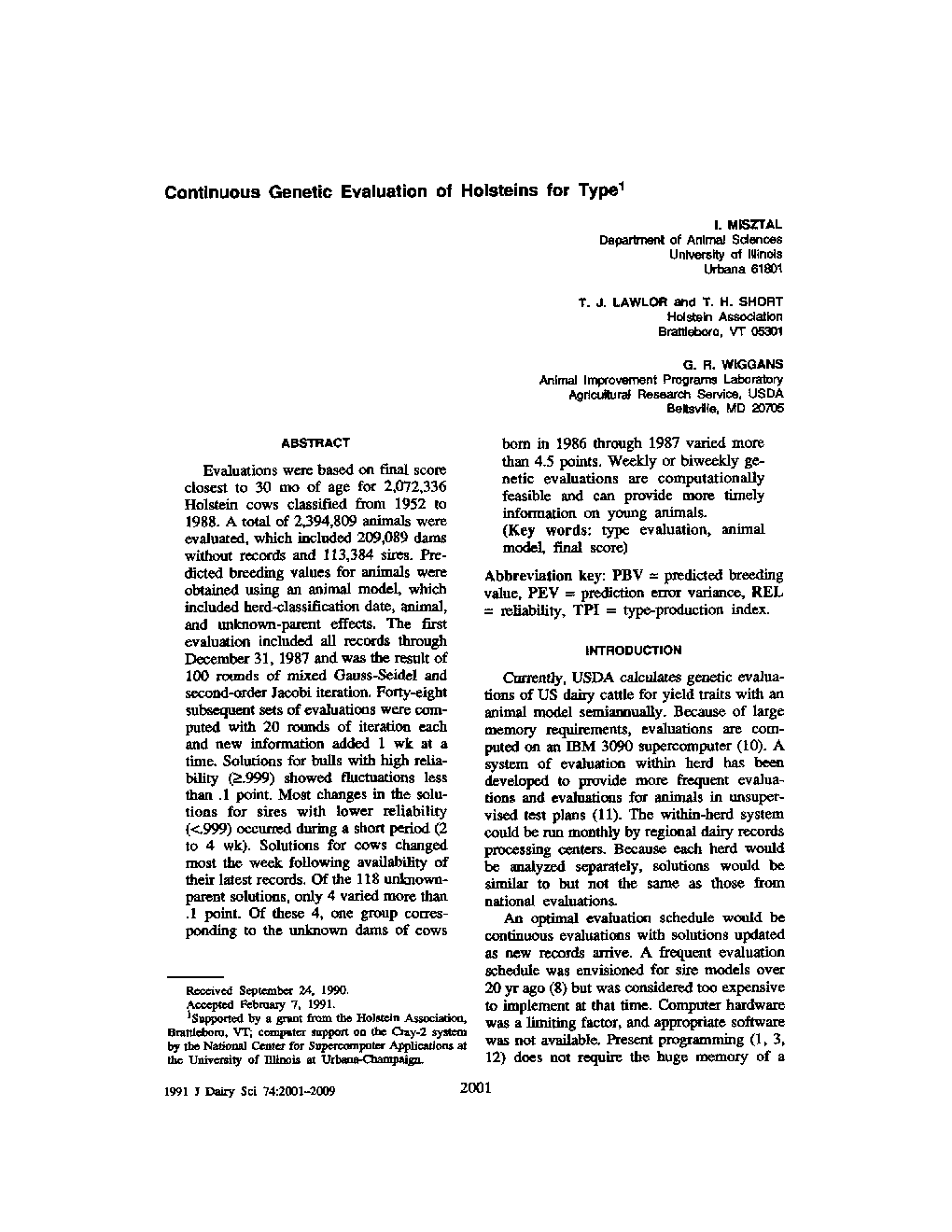| Article ID | Journal | Published Year | Pages | File Type |
|---|---|---|---|---|
| 2445088 | Journal of Dairy Science | 2009 | 9 Pages |
Abstract
Evaluations were based on final score closest to 30 mo of age for 2,072,336 Holstein cows classified from 1952 to 1988. A total of 2,394,809 animals were evaluated, which included 209,089 dams without records and 113,384 sires. Predicted breeding values for animals were obtained using an animal model, which included herd-classification date, animal, and unknown-parent effects. The first evaluation included all records through December 31, 1987 and was the result of 100 rounds of mixed Gauss-Seidel and second-order Jacobi iteration. Forty-eight subsequent sets of evaluations were computed with 20 rounds of iteration each and new information added 1 wk at a time. Solutions for bulls with high reliability (â¥.999) showed fluctuations less than .1 point. Most changes in the solutions for sires with lower reliability (<.999) occurred during a short period (2 to 4 wk). Solutions for cows changed most the week following availability of their latest records. Of the 118 unknown-parent solutions, only 4 varied more than .1 point. Of these 4, one group corresponding to the unknown dams of cows born in 1986 through 1987 varied more than 4.5 points. Weekly or biweekly genetic evaluations are computationally feasible and can provide more timely information on young animals.
Keywords
Related Topics
Life Sciences
Agricultural and Biological Sciences
Animal Science and Zoology
Authors
I. Misztal, T.J. Lawlor, T.H. Short, G.R. Wiggans,
